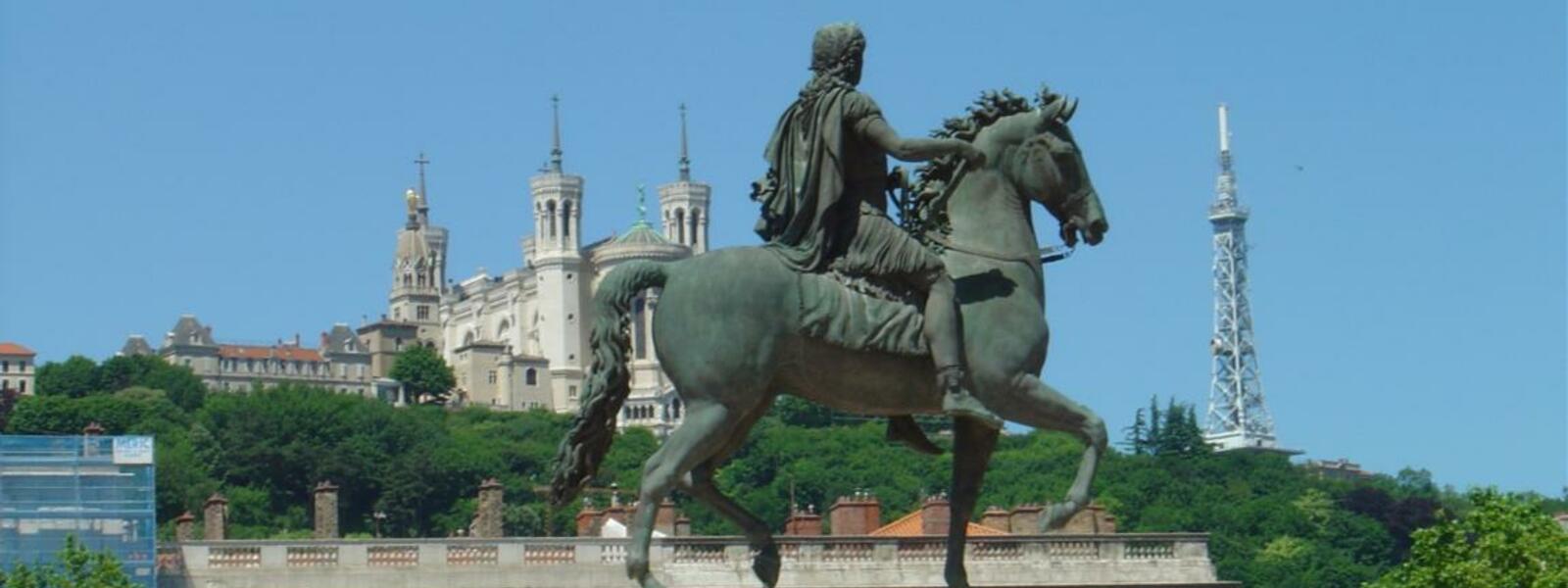Sculpted by Lyon brothers Guillaume and Nicolas Coustou in 1714, the statues on the Rhône and Saône were hidden inside the Hôtel de Ville during the French Revolution and restored to their place in 1826. The pedestal, designed by Jules Hardoin-Mansard and adorned with bronze by Chabry, was entirely rebuilt. Having fallen in love with Place Bellecour in 1658, Louis XIV chose this location to erect his statue in the centre.
The project set out by the king on 21st May 1713 decreed that the monument should be placed in the centre of a rectangle bound by trees on three sides. The royal architect Robert de Cotte specified that the statue should be placed on a pedestal and looking north, so that it would face the high numbers of people passing between the two bridges across the Rhône and the Saône.The first statue, sculpted by Martin Desjardin and erected in 1713, was destroyed and melted down in 1793 during the French Revolution.
François-Frédéric Lemot, (born in Lyon 1771, died in Paris 1827) sculpted the statue of Henry IV for the Pont-Neuf bridge embankment in Paris in 1818, as well as the statue of Louis XIV in Lyon and the lions in the Place Sathonay.Legend has it that when he realised he had forgotten to include stirrups on the Bellecour statue, he committed suicide. This is completely untrue, however. Louis XIV is represented in Roman style, riding bareback with no saddle or stirrups.

